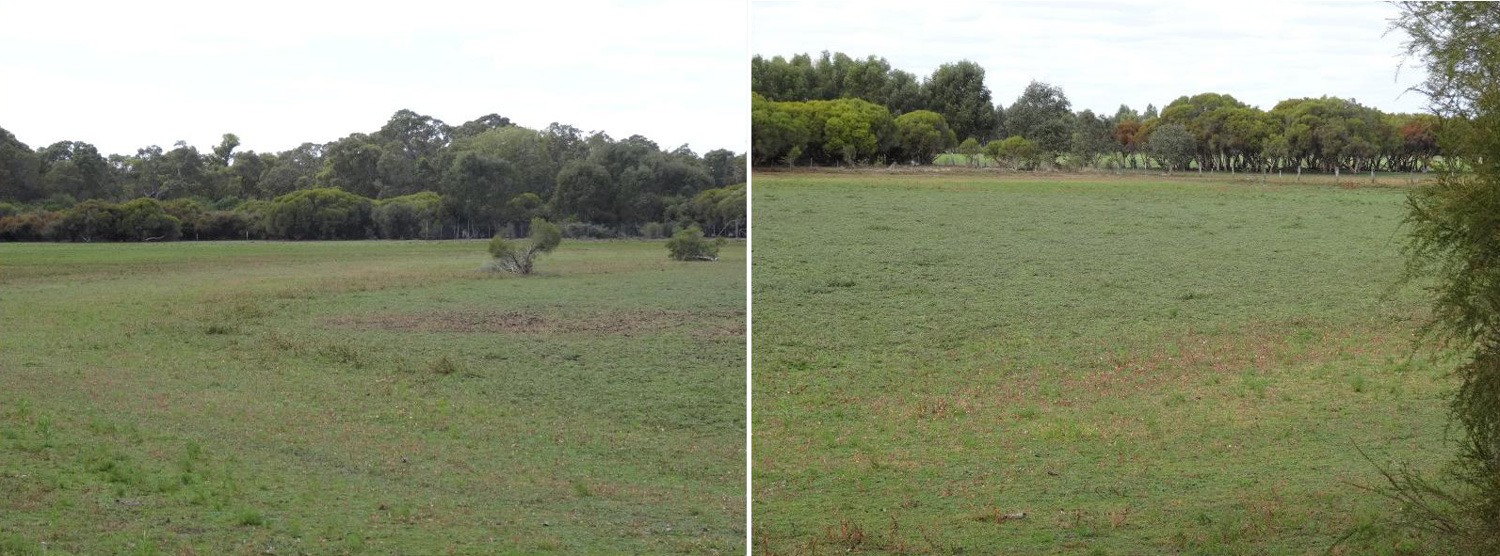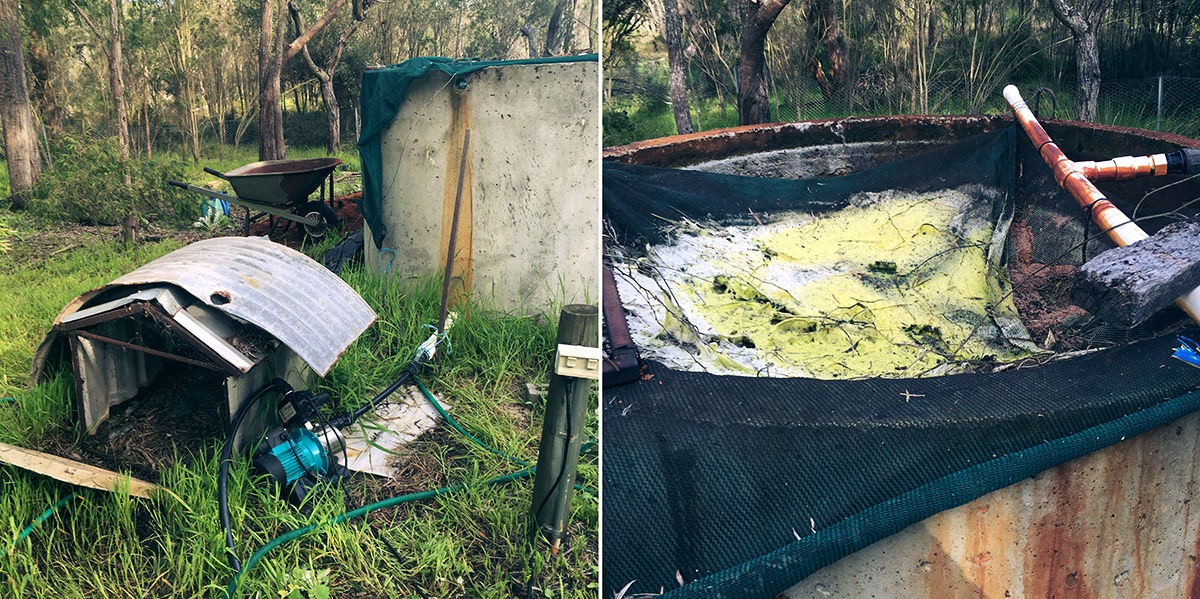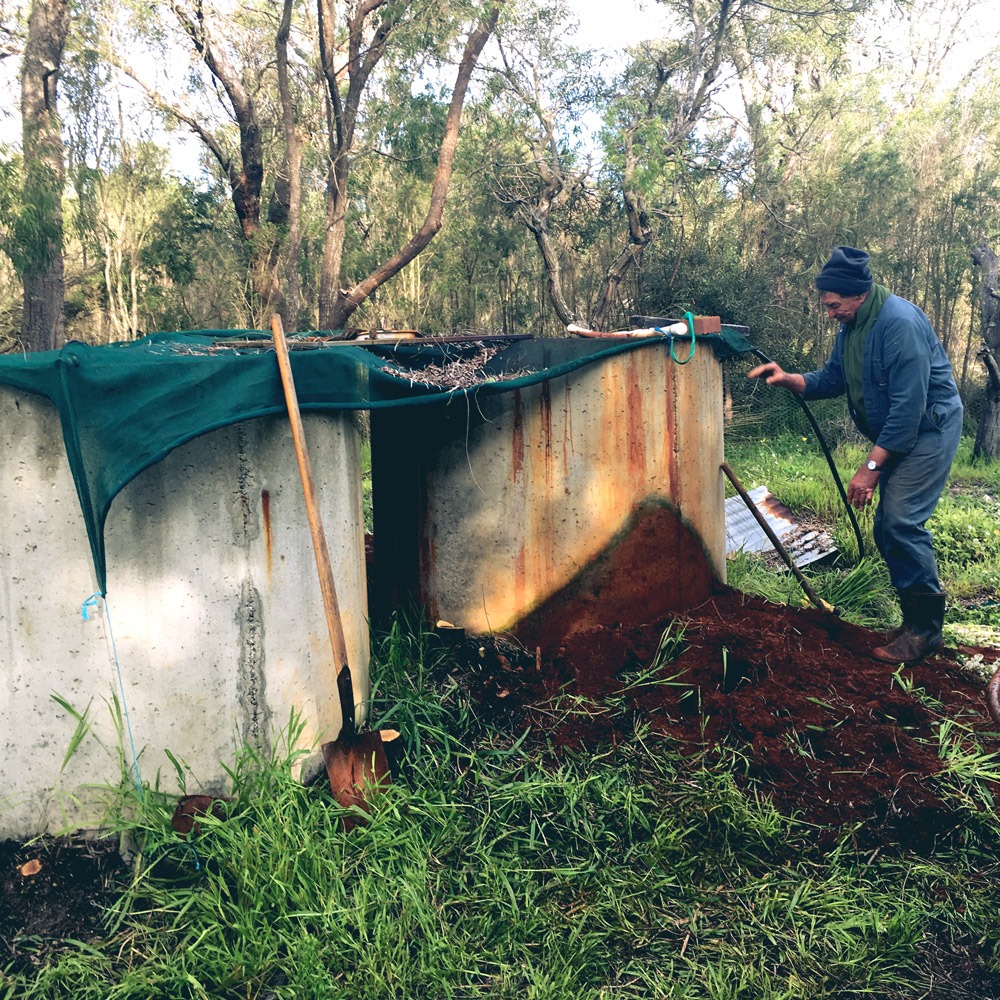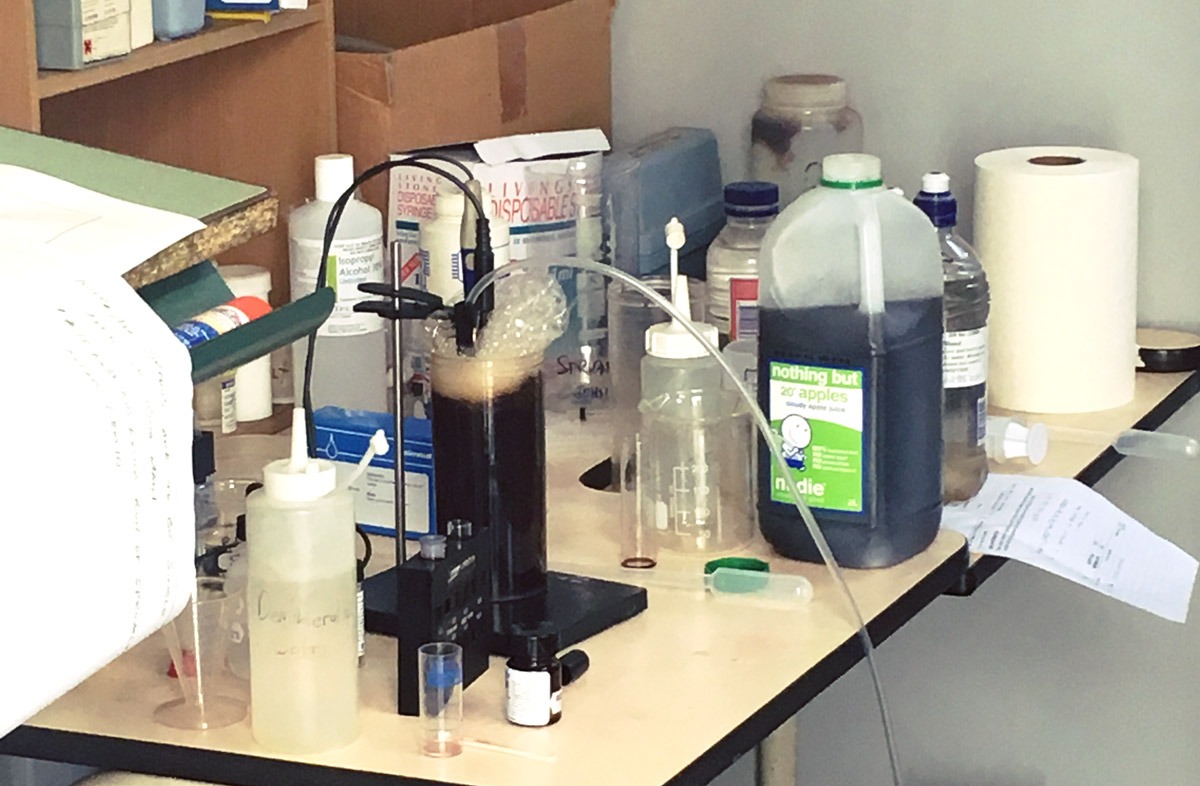The Bore: 50 Shades of Brown

The wetland is more of a paddock. It is almost completely dry, albeit green, but with no pooling of water.

The ‘wetland’ as per the realestate listing.
At the final inspection the tanks and lake have begun to fill. The bore is still offsite (to avoid being stolen) which means water and plumbing can’t be tested. Minor but annoying setback — fingers crossed everything is in order.

The exisiting pressure pump and two storage tanks – lots to improve on.
The water on first inspection seems to be okay, but after using the bore for a few days the water is getting more brown. My Dad decides that the bore tanks simply need to be cleaned. We confirm with the previous owners that the ‘coarse river sand’ that fills most of the first tank and naturally filters iron from the ground water needs to be changed intermittently.
We begin by removing all the overhanging trees (a dead banksia and some peppermints) that are dropping leaf litter into the tanks. We drain the settling tanks, remove the sand and clean the tanks. Meanwhile, a small committee begins to pool ideas to improve the ‘old-school’ system to make things easier in the future.

Manually removing the layers of iron-stained coarse river sand that act as a natural filter. We quit while we we’re ahead when we hit the layer of gravel.
Draining the tanks does not improve the situation. After filling the tanks again the water is only more black. We hypothesise that perhaps the iron needs time to settle, or that the natural system is ineffective.
This sets in motion Plan B: Rainwater. A mutual friend and plumber comes out to inspect the property, its existing plumbing and the bore. He helps to break things down, introduces a few more potential solutions, and has the brilliant idea to test the water. I collect a sample and head off to Southern’s Water Technology in Bunbury to get an expert opinion. I was still optimistic for a quick fix when I rolled in with my ‘merlot’, but after testing, things seemed dire.
| pH | 5.03 |
|---|---|
| TDS | 715ppm |
| Iron | 0 |
| Tannin present | |

My black bore water being tested at Southern’s Water Technology, Teede Street, Bunbury. The stiff foam indicates a high level of tannins.
With the water in its current state, there is really no quick fix or cost effective treatment solution apart from drilling a new bore (!). The previous owners assure me I don’t need a new bore, so I don’t give up, and wonder what might have caused the ‘muddy mocha’. We hypothesise that there could be a dirty pocket of ground water, so I could run the bore for 12-24 hours away from the point of origin and then retest the water afterwards to see if there is some improvement.
I try this eagerly, but no luck – a test of Sample 2 shows that salt levels have risen! A flocculant is added to the sample to show me how the water could be treated to remove tannins. Unfortunately it is still too salty for even watering the garden.

LEFT: Sample 1. RIGHT: Sample 2, tested 24 hours later with added flocculant.
After a more thorough discussion with the guys at Southern’s and a chat to the previous owner, it becomes clear this is a by-product of the seasonal change and proximity to the wetland. The above ground centrifugal bore is fed by the Leederville Aquifer, pulling water from a relatively shallow depth of 6m. The wetland is a basin that feeds into my groundwater supply. So essentially, my bore is pulling in all the salts and tannins that have built up over a dry summer and been washed out by the winter rains.
In more technical terms: after the previous year’s low rainfall, the soils shift from an aerobic to an anaerobic (process of reduction). Runoff from bushland areas is slightly acidic due to tannins (humic acid) which are found naturally in leaves. Additional nutrients, dissolved material and chemicals are released from the sediment as the water levels increase. Hence the low pH, high salt and abundance of tannin.
I’ve given up on any immediate action concerning the bore’s brown situation, instead deciding to live with it for now and focus on the rainwater project. I often get up at 4am to investigate why the pressure pump keeps switching on and off, and spend the days tracking down and repairing leaks in the many lines.
I learn how to actually prime the pump (process of removing any air by filling a port with water.), as opposed to just guessing and/or scientifically ‘jiggling’ the pipe. I recommend reading instructions! I set up an outdoor hose that extends down to the bore to make things easier.
The bore water quality has definitely improved. I happily shower and do dishes with it, but we still use the rainwater for washing, drinking and cooking.
The rainwater project is now in progress, meaning that much of the extensive network of pipes is cut off, isolating the bore line to feed only 2 outdoor taps and the toilet. At the same time I am having more and more difficulty priming the bore pump to fill the settling/storage tanks. After some investigation, including testing the pump and spearing the bore, it is clear there is no issue with either.
Via deduction we conclude that the water table has now dropped lower than the threshold for a single drop above-ground centrifugal pump. Atmospheric pressure limits a pump’s ‘pull’ to about 6-7m, so once the water table drops below that level my bore is out of action.
If I want to guarantee year-round bore water, I need a submersible pump.
There is still talk of a MacGyver-esque plan to convert the existing pump into a ‘Deep Well Jet Pump’ by adding a second drop, which effectively allows water to be pumped down the bore, pushing it back up in order to overcome the atmospheric pressure.
After discussions with Steve from Think Water, Bunbury, it’s clear that whilst this may be a more ‘creative’ cost-effective solution, it could be laborious and inefficient. I got the impression it would be more art than science in determining output. Whilst the demands on this water supply are not great, I don’t see it as a long-term solution, and I am determined to make this property lower-maintenance, not higher.
I begin to research submersible pumps, and the price and quality seem to vary greatly. I don’t need to overcapitalise on power or fill the storage tanks quickly, so I focus on the entry-level bores that serve the pipe head and a few aerating sprinklers. I also don’t want something that will need constant repair or replacement (ie. cheap Chinese). I’m recommended 0.75-1hp and I narrow it down to a Wilo (German) and a Tuhorse (Canadian).
I can’t find many reviews of the Tuhorse, and after the exceptional customer service of Craig from Pump Express I decide to go the slightly more expensive route with the Wilo TWI 4.09-05-B (0.75hp, 230V) submersible bore pump (equivalent to Grundfos SP3A-09).
Installation day comes, and like every good ‘bushblock project’… it doesn’t go to plan. We remove the old bore and prep the new one joining the electrical cables and pipe. This part seems to go relatively fine; we drop the pump down into the bore, switch it on, and success! We have water. Again.
But a few minutes later it all ends in a trickle.
Bore pump comes back up, connections are checked, the bore gets lowered deeper.
Flowing water slows to a drip.
It’s not til the fourth or fifth iteration that Tim (our Dutch muscles/all-round legend), playing with the pipe end, realises that pressure on the end of the pipe = constant flow. We add a gate valve to the end of the pipe to regulate the pressure and add a salvaged sprinkler for good measure. Success, finally!
So after a massive education about wetland waters, bores and natural filtration systems, there is slightly less brown water in my life. Thankfully the water quality improved as the season passed, a new submersible bore pump has been installed and (leaky) pipes have been rationalised.
You can easily see the massive change in quality of the water from the samples I’ve photographed below. From left to right, the first is the bore water in September, sample 1 with the tannins mostly in suspension. The second sample is the water after re-testing with the addition of a flocculant to separate out the tannins; this after a settling period of about 24 hours.
Samples 3-6 were taken in June (nearly 9 months later). Sample 3 is ‘fresh water’ from the wetland at the end of Summer. Sample 4 is the bore water from the tap after being ‘naturally filtered’. Sample 5 is the rainwater from the plumbed tanks and Sample 6 is from the tank adjacent the house that we use for drinking and cooking.
Read more about the rainwater project here.

